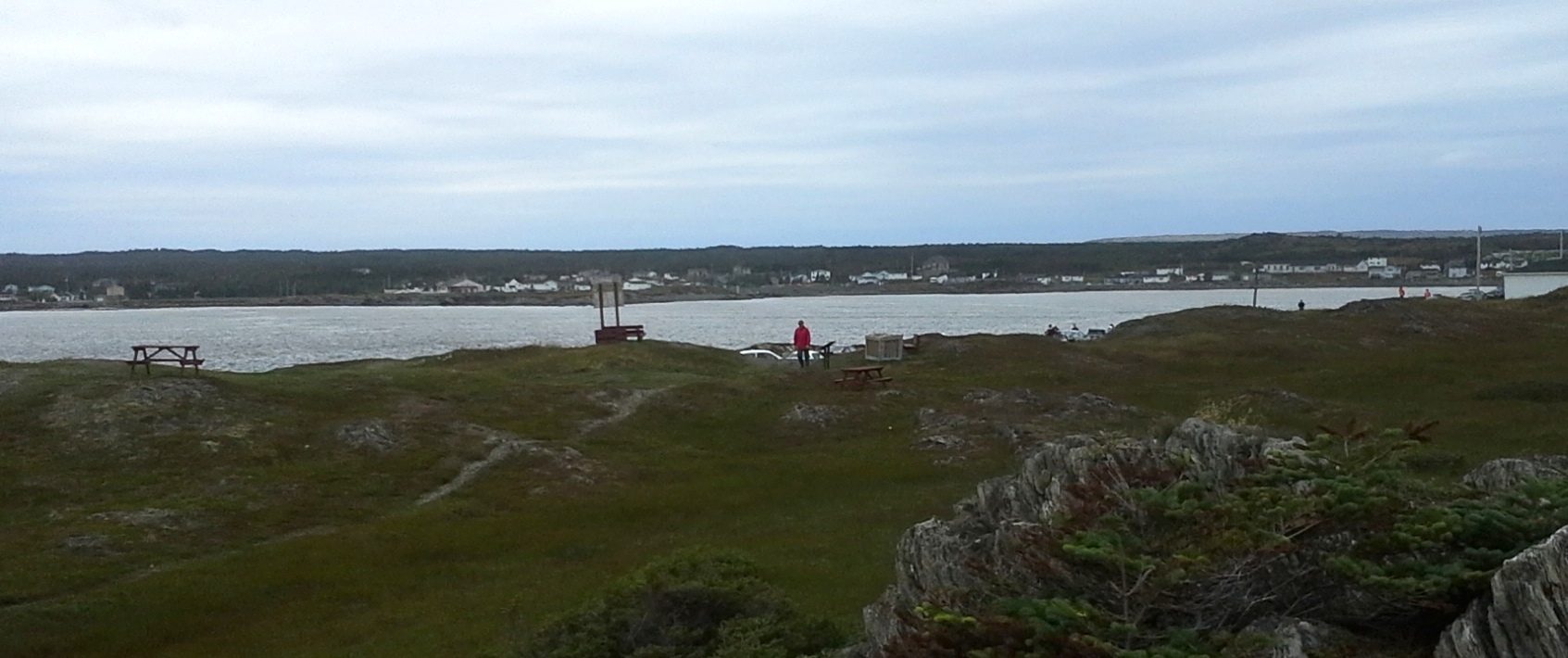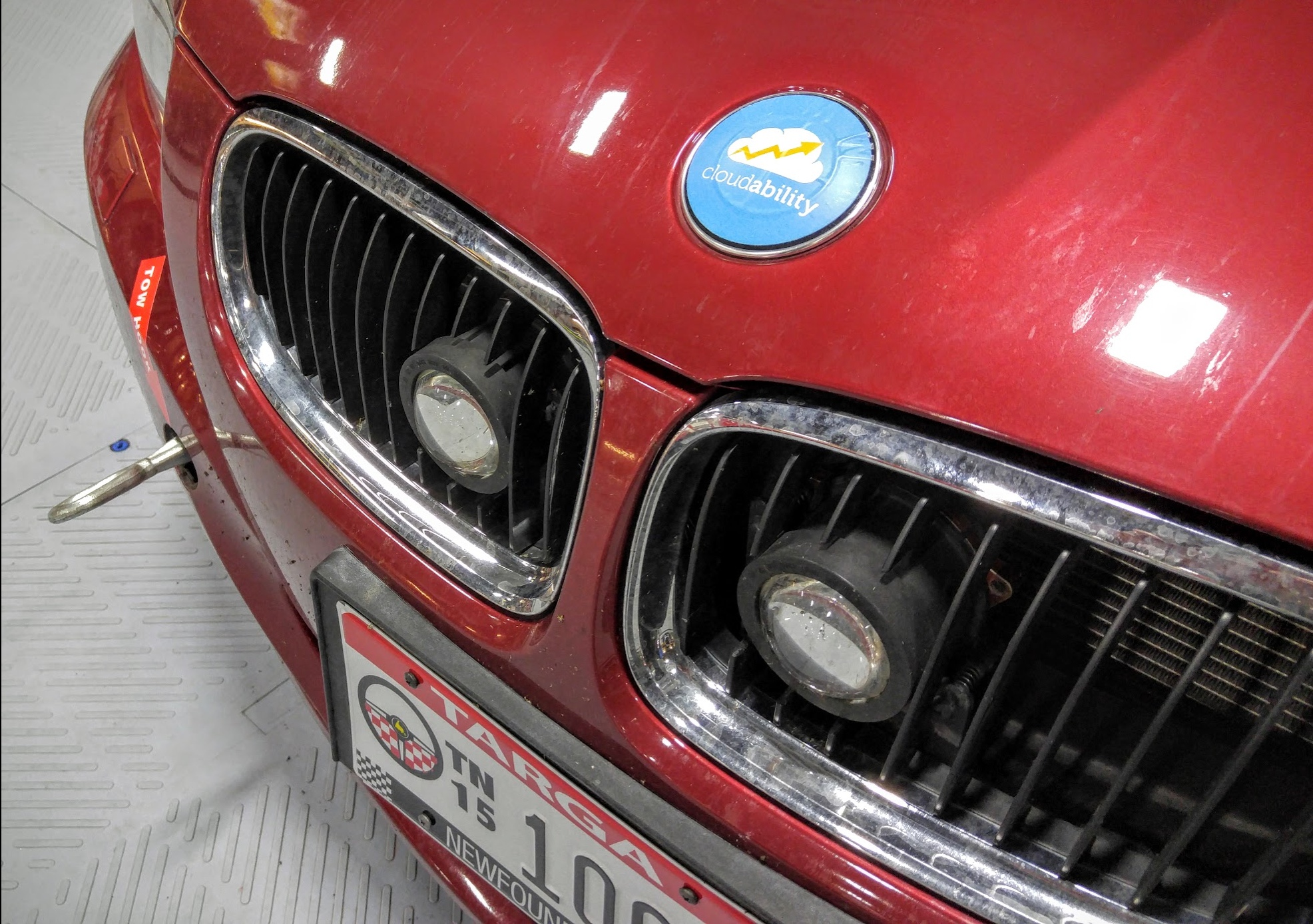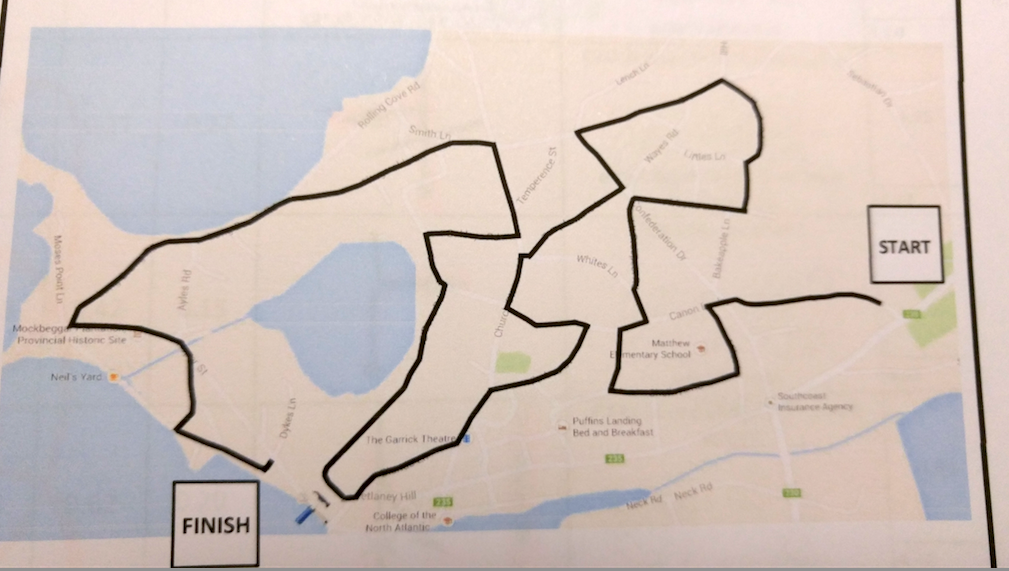Day -2: The six ay-yem alarm shattered our rest period. After staggering through the shower, we threw some stuff in the car – and the car wakes up much better than we had, starting instantly and barking its bark. We headed up the peninsula for Flatrock and the rally school.
Picturesque? Yah. We might get used to the scenery after a week, but at this point it’s stupefying. “Flat Rock” sounds like an unimaginative name for a town, ’til you see the slab of rock they’re talking about. Then you’re impressed they could put any words to it.
And these towns have been around a while… some places settled in the sixteenth century? Okay, I can see that. The accents are an oddments mix of Scots, Irish, West Country England, and I-don’t-know-what. Arr they nice? Shurr. Are they law-abidin’? Shurr, mostd’ time.
The rally school taught one key lesson: drive in the center of the road. The shoulders are worn away, rough and ragged, and tire hazards are everywhere. We went through two practice stages at low speeds. On the second, we missed two turns by misunderstanding the route book. Hopefully the turns will be clearer when all the taping and marking is done.
Day -1: Technical inspection, held in a hockey arena with its ice covered by heavy plastic tiles, took awhile. Even the relatively mild regulations controlling our equipment bear interpreting, and some negotiation and discussion with the inspectors. The Targa cars, many of which are heavily customized, drew the largest share of the inspectors’ attention, so we weren’t done ’til 4 p.m.
Then a slight surprise: for the benefit of publicity and event promotion, the organizers had set a ‘car show’ for the public running ’til 9 p.m. Following that surprise, another: the cars were then to stay overnight in the arena. Hmm. Our hotel is 15km away. We negotiated an escape, based on the “normalness” of our station wagon, and drove ourselves and our teammates back to the Holiday Inn and bed. Our teammates’ car was too interesting to be paroled.
Day 0: Preview/Prologue stages. The four of us were early awake, out to the arena, through the breathalyzer line, and then… in a meeting. Something about safety. And another meeting. Something about speeding outside the stages. And almost another meeting, but instead a general rush for the exit. 40 cars, many barely street legal, trotting up the Torbay Road at the 50 k.p.h. limit toward the first stage start.
Four runs total today, two each of the two practice stages, which helpfully were the same we’d run at legal speeds two days before. There were hundreds of spectators along the stages, in little cliques near their homes or in moderate crowds near corners that promised excitement.
We missed no turns today. And we were mostly in the center of the road.
There were some clock issues both on the organizers’ side and on ours, so we’re not positive we’re perfectly on pace – but no penalty points are given today, so ehhh.
Tomorrow, the seconds count.


